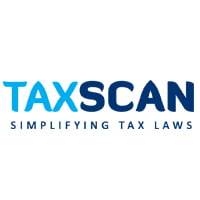Investing in Multiple Flats will not deny the benefit of exemption from Long term Capital Gain Tax: Madras HC [Read Judgment]
![Investing in Multiple Flats will not deny the benefit of exemption from Long term Capital Gain Tax: Madras HC [Read Judgment] Investing in Multiple Flats will not deny the benefit of exemption from Long term Capital Gain Tax: Madras HC [Read Judgment]](https://www.taxscan.in/wp-content/uploads/2016/06/Madras-High-Court-Tax-Scan-1.jpg)
The single bench of the Madras High Court, recently held that the benefit of exemption from Long term Capital Gain Tax under section 54F of the Income Tax Act, 1961 can be claimed by an assessee for investing in multiple flats.
Justice T S Sivagnanam also found that the legislative intention behind section 54F of the Income Tax is not limited to grant deduction in respect of a single property.
The grievance of the petitioners is that the assessee’s claim for deduction under section 54F of the Income Tax Act was disallowed on ground that he has invested the sale consideration of his property in multiple flats and further, the construction of which was not completed upto 70%. The Department also initiated re-assessment proceedings on the basis of this. The petitioners challenged the proceedings through a writ petition.
It was contended on behalf of the assessee that section 54F, being a beneficial provision, without taking note of the provision, as it stood at the relevant point of time, investment in residential property is allowable, even though spread over multiple flats.It was further submitted that delay in handing over of the property by the seller to the petitioner is not materially relevant for grant of exemption under Section 54F of the Income Tax Act.
While analyzing the provision, the Court observed that “Section 54F deals with 'Capital gain on transfer of certain capital assets not to be charged in case of investment in residential house'. The common condition both under Section 54E to 54ED and 54F, is that the assessee must purchase or construct a residential house before or after the transfer of the asset, which yields capital gains. If the assessee had invested the money in the construction of the house within the time limit, the exemption cannot be denied on the ground that construction has not been completed. However, the onus is on the assessee to produce sufficient material to establish the claim for exemption. In the instant case, the petitioner claimed exemption by stating that they have purchased flats with the built up area of 8050 sq.ft., along with an extent of 1807 sq.ft of undivided share in land by a document, dated 29.10.2010. The reason for reopening the assessment is that the petitioner has invested an amount of Rs.2,62,50,000/-, into five flats and the construction of the flats were completed only upto 70% at the relevant point of time and therefore, the petitioner is eligible to claim exemption under Section 54F only for a residential property, apart from the fact that the only 70% of the construction has been completed.”
Regarding the question would be whether the petitioner can be denied exemption on the ground that he has invested in five flats and the effect of the construction having been only partially completed, it was observed that in a similar case in Smt. V.R.Karpagam the ITAT found that assessee was eligible for claiming exemption under Section 54F of the Act on the five flats received by her in lieu of the land she had parted with.
Following the various decisions including the above one, the Court found that “a residential house” used in Section 54, should not be taken to convey the meaning that it refers to a 'single residential' house and if that was the intention of the legislature, the framers of the statute would have used the word “one” instead of “a”. In fact, the facts of the case in Smt. V.R.Karpagam(supra), is more or less identical to that of the case on hand, which also pertained to a development of a property, originally owned by the assessee and the consideration was that the owner/assessee was to receive 43.75% of built up area after development, which translated into five flats.”
In the instant case, there is no doubt raised by the respondent with regard to the petitioner's eligibility to claim exemption under Section 54F, but the dispute is as to whether the petitioner is entitled to claim such exemption for all the five flats or for only one flat.
In view of the above findings, the Court held that the petitioner is entitled to the benefit of exemption under Section 54F as claimed by him and the reasons for reopening the assessment for the relevant AY is unsustainable.
Read the full text of the Judgment below.


